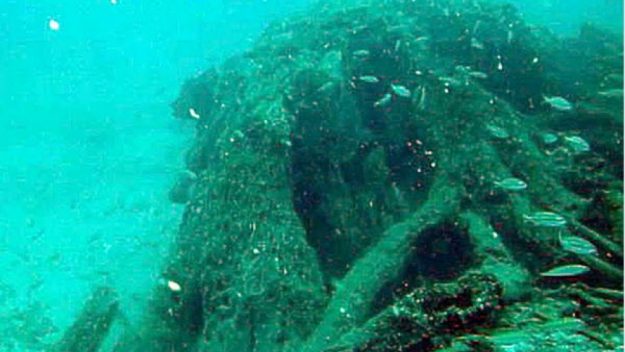ALABAMA: Prehistoric Forest Found On Sea Floor Off Coast
An ancient forest has been found “entombed” in the floor of the Gulf of Mexico off Alabama, prompting the National Oceanic and Atmospheric Administration to orchestrate a study of the haunting site.
Among the goals: To see if the jumble of prehistoric trees host undiscovered “compounds for medicine biotechnology,” which can be a basis for new types of antibiotics, according to a report shared Monday.
Scientists believe the ghost forest dates back 60,000 years and consisted of bald cypress growing along the banks of a long-vanished prehistoric river, the report says. NOAA video from the site shows it is alive with schools of fish swimming among the encrusted tree trunks sticking out of the seafloor.
“Over time, the massive trees grew and died, their enormous trunks falling and becoming entombed in a protective covering of peat and sediment,” NOAA reports.
“As sea level rose and the coastline receded, these ancient forest remains were buried beneath the sea surface off the coast of Alabama, where they remained undisturbed for millennia. Intensifying storms along the coast, however, have scoured the seafloor, beginning to expose this ancient submarine forest.”
Scientists from Northeastern University and the University of Utah are partnering with NOAA’s Office of Ocean Exploration and Research to “unlock the forest’s secrets,” NOAA says.
Marine animals and microorganisms that live on submerged wood and inside it are of particular interest, NOAA says.
“The team’s focus is on bacteria found in wood-eating ‘shipworms,’ a type of clam,” NOAA reports.
“These ‘termites of the sea’ convert wood into animal tissue, forming the base of a food chain that can support a rich diversity of fish, invertebrates, and microorganisms in communities that resemble thriving coral reefs.”
Field work began in December with timbers collected from the submerged forest. Scientists discovered the ancient wood hosted “more than 300 animals” and “100 strains of bacteria, many of which are novel,” the report says.
The team intends to continue field work in August through December, NOAA says.
–thestate.com
###


